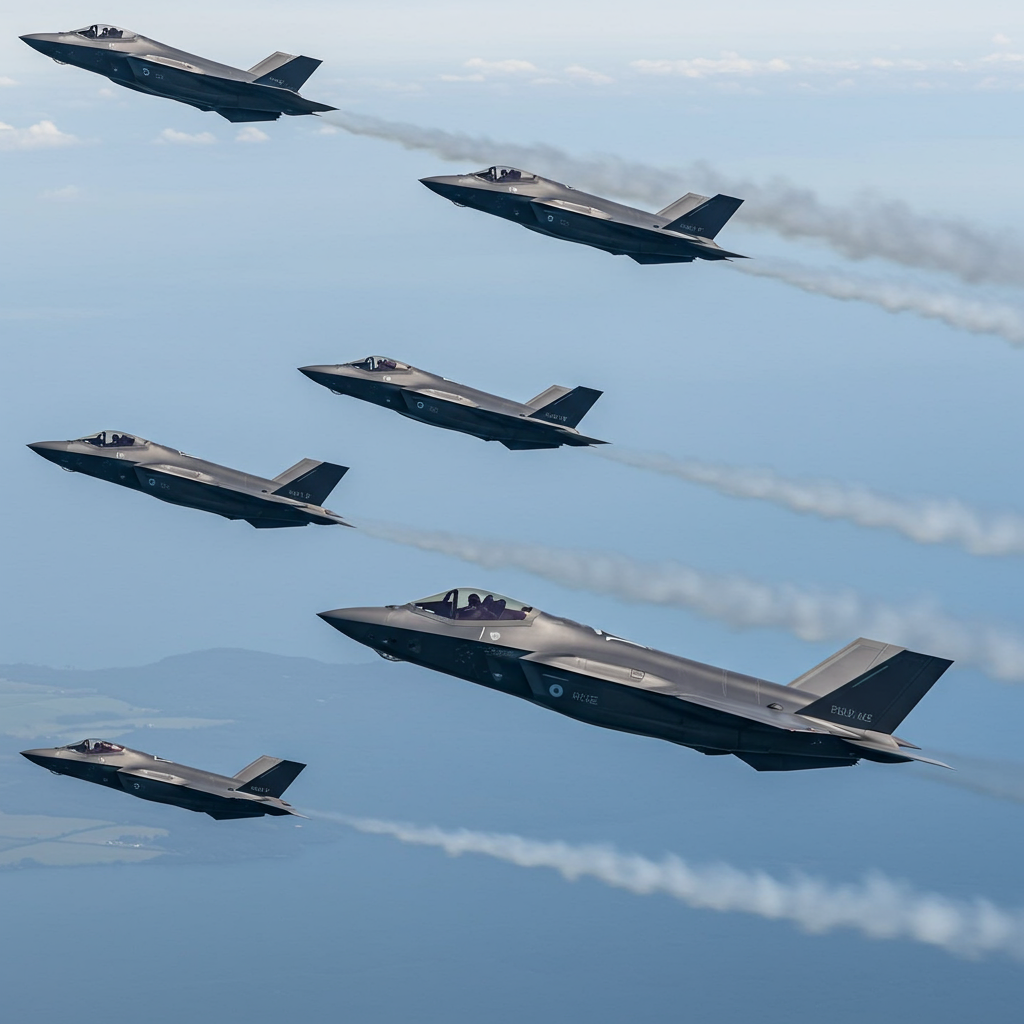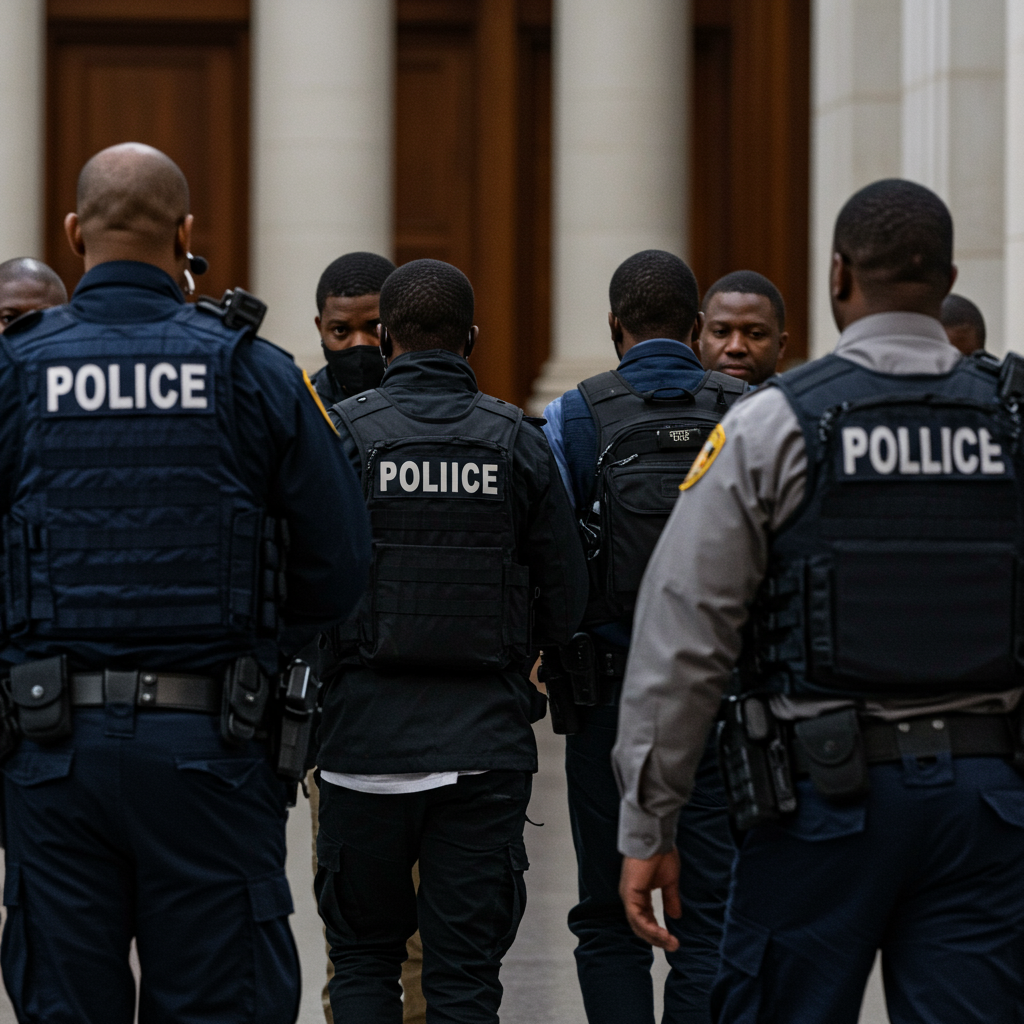The United Kingdom has announced a significant move to bolster its defense capabilities and nuclear posture, revealing plans to purchase 12 F-35A stealth fighter jets. This decision, timed with a recent NATO summit in The Hague, marks a pivotal moment as it will enable the Royal Air Force (RAF) to field nuclear-capable aircraft for the first time since the end of the Cold War in the 1990s.
A Return to Air-Launched Nuclear Capability
Currently, the cornerstone of Britain’s nuclear deterrence rests solely on its fleet of submarines carrying Trident ballistic missiles. The addition of the F-35A fighter-bombers provides a crucial airborne component, moving the UK closer to possessing a nuclear ‘triad’ of delivery systems (though it lacks land-based weapons). Once delivered, these versatile jets will be capable of carrying both conventional munitions and tactical nuclear weapons, specifically the B61 Mod 12 gravity bombs, which are part of NATO’s nuclear sharing program.
Prime Minister Keir Starmer’s office described this acquisition as the “biggest strengthening of the U.K.’s nuclear posture in a generation.” It signifies the UK rejoining NATO’s airborne nuclear mission, where allied aircraft are equipped with U.S.-owned B61 bombs stockpiled in Europe under a “dual-key” arrangement requiring consent from both the U.S. President and the UK Prime Minister for their use. This move is seen as reinforcing the European pillar of NATO, particularly at a time of heightened geopolitical tensions and ongoing discussions about allied defense commitments. Seven other NATO members already operate dual-capable aircraft capable of carrying U.S. B61 warheads on their territory.
Why the F-35A Variant?
The UK already operates the F-35B variant, a short takeoff and vertical landing (STOVL) jet designed for carrier operations from the Royal Navy’s aircraft carriers. However, the F-35B is not equipped to deliver nuclear warheads. The F-35A, a conventional takeoff and landing (CTOL) version, was chosen for this new nuclear role due to several key advantages.
Experts note that the F-35A is approximately 25% cheaper to operate per aircraft than the F-35B. Crucially for the nuclear mission and other roles, it boasts greater internal fuel capacity for extended range and longer sorties, carries a wider variety of weapons, and has larger weapon bays capable of accommodating weapons designed to destroy sophisticated air defense systems – a capability not available on the B variant. Its higher G-limit (9G vs 7.5G for the B) also offers performance benefits.
Dual Role: Deterrence and Training
While primarily acquired for the nuclear mission, the initial batch of 12 F-35As is slated to play a significant role in training. They will mainly be assigned to the RAF’s Operational Conversion Unit (OCU), 207 Squadron. Using F-35As for training is expected to improve pilot readiness and efficiency due to the variant’s lower maintenance requirements and greater availability. This will also help free up the UK’s existing F-35B fleet for frontline operational duties, particularly aboard the aircraft carriers.
The long-term plan for the UK is to acquire a total of 138 F-35s, a mix of A and B variants, over the program’s lifetime. The current firm orders stand at 48 F-35Bs, with the newly announced 27-jet order split into 12 F-35As and 15 F-35Bs. While the F-35A purchase adds valuable capability and potentially helps streamline training, analysts suggest the current and planned F-35B numbers (around 63 identified so far) may still fall short of the numbers needed to consistently sustain carrier strike operations from two carriers simultaneously, which is estimated to require 60-70 jets.
Strategic Context and Challenges
The decision aligns with findings from a recent government-commissioned security review that highlighted new nuclear risks and recommended exploring enhanced participation in NATO’s nuclear mission. The review also warned of the potential for armed conflict on British soil and emphasized the need for increased lethality, readiness, stockpiles, and new technology in response to evolving global threats, particularly from authoritarian aggression and great power competition involving nations like Russia.
This investment is part of a broader push towards increasing UK defense spending. Prime Minister Starmer recently committed the UK to a new NATO target of dedicating 5% of its economic output to national security by 2035, with 3.5% specifically for military spending.
However, the purchase, particularly the reliance on a U.S.-made aircraft and U.S.-controlled nuclear weapons for the airborne capability, has drawn criticism. Some observers argue that it deepens the UK’s dependence on U.S. goodwill and reliability, especially in an unpredictable global landscape. Additionally, questions remain regarding the funding of increased defense spending amidst existing financial pressures and the cost-of-living crisis in the UK.
The new F-35A jets are expected to be based at RAF Marham in Norfolk and are anticipated to be delivered by the end of the decade. Their integration will require some infrastructure adaptations, including modifications to the RAF’s Voyager tanker fleet to accommodate the F-35A’s boom refueling system, which differs from the F-35B’s probe-and-drogue system. The move could also have potential implications for the future of the UK’s domestically-led Global Combat Air Program (GCAP)/Tempest project, depending on future F-35 procurement decisions.
By acquiring the F-35A and re-establishing an air-launched nuclear capability, the UK aims to enhance its deterrent posture, contribute more robustly to NATO’s collective defense, and navigate an increasingly complex international security environment.




